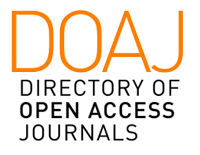[GW28-e0956]
The relationship between the contralateral collateral supply and myocardial viability of 18F-FDG PET/CT subtended by chronic total occluded coronary arteries
Wei Dong Jianan Li Xiantao Song Xiaofen Xie Jian Jiao Quan Li Yehong Zhang Hongzhi Mi
Beijing Anzhen Hospital, Capital Medical University
Objectives: Coronary angiography(CAG) often showed collateral flow supply for the coronary artery of chronic total occluded(CTO) in asynergic myocardial regions. However, little is reported on the relationship between collateral circulation and positron emission tomographic (PET) patterns of viable myocardium subtended by CTO. The aim of this study is to analyze of the relationship between the collateral flow of CTO and myocardial viability detected by 18F-FDG PET /CT imaging.
Methods: A prospective analysis of 80 patients with 93 CTO coronary arteries diagnosed by CAG from September 2015 to January 2017 in department of Cardiology of our hospital. All patients performed 99mTc-MIBI rest myocardial perfusion imaging(MPI) in one week. 18F-FDG PET/CT was further examined in abnormal myocardial perfusion and wall motion regions. The collateral circulation of CTO was graded with rentrop classification as absent (grade 0 and 1) in 12 CTO vessels, partial collateral (grade 2) in 28 CTO vessels and well collateral (grade 3) in 53 CTO vessels. Myocardial viability was determined with 99mTc-MIBI MPI and 18F-FDG PET imaging results. The patterns were interpreted as mismatch (perfusion defect with enhanced 18F-FDG uptake); transmural match (severe concordant decreased or absence of both perfusion and 18F-FDG uptake) or nontransmural match (mild to moderate concordant decreased of both perfusion and 18F-FDG uptake) and normal perfusion and 18F-FDG uptake.
Results: There was no significant correlation (p= 0.726) between the severity extent of perfusion defect and collateral circulation grade. The extent of viability myocardium was unrelated to the present or the grade of collateral vessel. The myocardial viability was common present in mild and moderate hypokinetic regions (42/42,100%)and decreased in severe (25/26,96%)or akinetic-dyskinetic regions (18/25,72%). The presence of collateral circulation was a sensitive(93%)but not a specific (17%)sign of myocardial viability.
Conclusions: In CTO patients, the presence and increased grade of collateral circulation in CAG does not seem to be an effective way for predicting myocardial viability. Further analysis of PET patterns of viable myocardium is needed to guide further revascularization and predict functional improvement and survival benefit.














